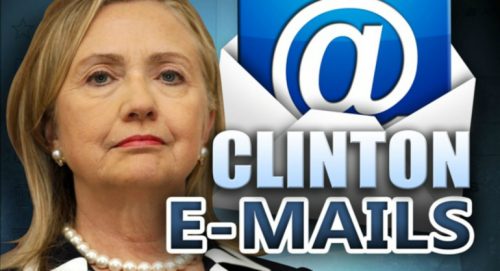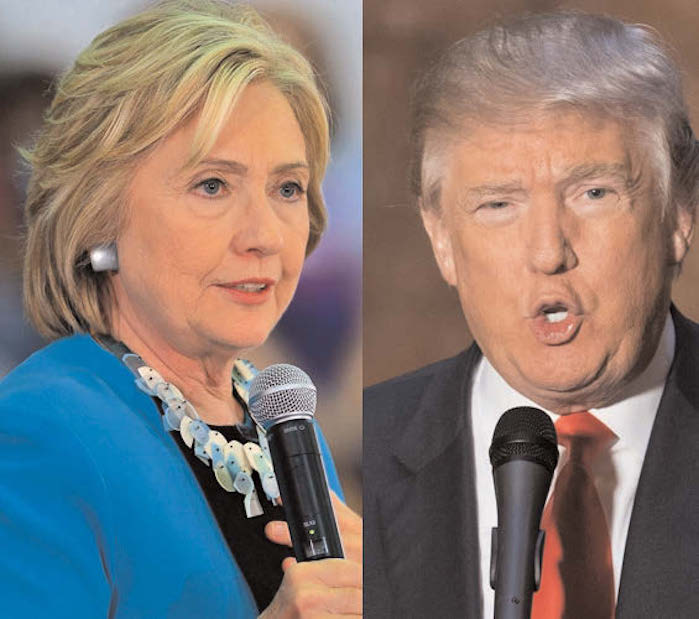
“Emailgate” has plagued Hillary Clinton‘s campaign since the push for her nomination began nearly a year and a half ago, painting her as a corrupt politician, or in some cases, an inept one.
In March 2015, it became publicly known that Hillary Clinton, during her tenure as United States Secretary of State, had exclusively used her family’s private email server for official communications, rather than official State Department email accounts maintained on federal servers. Those official communications included thousands of emails that would later be marked classified by the State Department retroactively.
The controversy unfolded against the backdrop of Clinton’s 2016 presidential election campaign and hearings held by the United States House Select Committee on Benghazi. Some experts, officials, and members of Congress have contended that her use of private messaging systemsoftware and a private server violated State Department protocols and procedures, as well as federal laws and regulations governing recordkeeping.
In response, Clinton has said that her use of personal email was in compliance with federal laws and State Department regulations, and that former secretaries of state had also maintained personal email accounts though not their own private email servers.
In May 2016, the State Department’s Office of the Inspector General released an 83-page report about the State Department’s email practices, including Clinton’s.
On July 5, 2016 upon concluding its investigation, the FBI stated that Clinton was “extremely careless” in handling her email system but recommended that no charges be filed against Clinton.
On July 6, 2016, Attorney General Loretta Lynch announced that no charges would be filed.
On July 7, the State Department reopened its probe into the email controversy.
On September 2, 2016, the FBI published a report on the investigation into her server which was 58 pages.
How did the scandal start?
For Clinton, the saga began at the start of her tenure as secretary of state. Rather than locking up her personal BlackBerry before heading into her secure office space and using an authorized State Department email address, Clinton fought concerned officials for the ability to exclusively use her personal phone for professional, family and friendly correspondence. After a meeting with Clinton’s chief of staff, specialists from the State Department and National Security Agency expressed concern that hackers could turn the phone into a listening device. Yet Clinton insisted on toting around her beloved BlackBerry.
What many of those involved—though it’s not clear how many—didn’t know was the more dangerous aspect of the problem: the fact that Clinton’s BlackBerry emails used “clintonemail.com,” the unsecure private server at her home, making her phone not only a potential listening device, but a source for reading sensitive discussions, as well.
Interest in Clinton’s use of a private email server spiked just after she left office in early 2013, when the New York Times published an exclusive report that cited lawyers and officials who said she may have broken federal law by keeping her emails private rather than submitting them to government recordkeeping.
The congressional committee investigating Clinton’s response to the attack on the U.S. consulate in Benghazi demanded that Clinton, her lawyers and the tech companies associated with the accounts turn over all emails relevant to the inquiry. The State Department provided the Benghazi committee with about 15,000 pages of relevant emails from her private server in August 2014. Between May 2015 and February 2016, the State Department continued to make public what would sum up to 30,000 emails. It has yet to release 14,900.
Why do they matter?
Though Clinton and her aides insist her use of the private phone and “clintonemails.com” was a matter of convenience, officials worried about the server’s vulnerability to hacks. To make matters worse, eight email chains contained “top secret” information, 36 held information described simply as “secret,” another eight included “confidential,” information, and about 2,000 have been retroactively classified as “confidential,” the lowest level of classification, according to the Times.
Aside from making sensitive diplomatic information easy prey for hackers, the scandal also augmented voters’ suspicions that she is far from trustworthy and coincided with a dive in her favorability ratings, according to Gallup. Despite the sheer volume of her opponent Donald Trump’s widely-criticized remarks and reports of his own scandalous behavior, what might’ve been an easier race has become nearly a tie. In a recent McClatchy-Marist poll, for example, while 40 percent of likely voters held favorable views of Clinton, only 36 percent thought she was “honest and trustworthy.”
Exacerbating the image of dishonesty, Bill Clinton spontaneously met with Attorney General Loretta Lynch on the tarmac of the Phoenix airport on June 27 just as the Justice Department was wrapping up its examination of his wife. And while the Federal Bureau of Investigation director James Comey announced on July 5 the bureau’s decision not to indict Clinton for her actions, he called her use of the private server “extremely careless”—not exactly an ideal quality for a commander in chief.
But didn’t Colin Powell do it, too?
When pressed about her use of the private server at the March 9 democratic primary debate, Clinton claimed that her predecessors “did the same thing.” But former Secretaries of State Madeleine Albright and Condoleezza Rice, the first State Department leaders for which email was available, said they generally did not use the mode of correspondence while in office, as PolitiFact pointed out. Colin Powell, however, did use a personal email address, but not via a private server in his home.
Clinton might’ve had better luck in her attempt to divert attention from her private server had she pointed to the George W. Bush administration’s 22 million “lost” emails, as reported by Newsweek.
What’s in the emails, anyway? If you want, you can read them yourself on the FBI’s “Vault” records. Some of them provide humorous insight into the day-to-day workings of the State Department, but others are more serious. Most alarmingly, Clinton used the server to communicate State Department deliberations surrounding a covert drone strike operation, along with many other messages containing classified information. When questioned by the FBI about whether she understood the “C,” meaning “classified,” in the emails sent and received on the clintonemails.com account, Clinton said she thought the letter was used for alphabetical ordering.
Why are we still talking about this? Nearly a year after Clinton’s former democratic primary opponent Bernie Sanders told her that “the American people are sick and tired of hearing about your damn emails,” the scandal continues to dominate headlines. That’s in part because Republicans in Congress, such as House Speaker Paul Ryan and members of the House Oversight Committee, continued to bring up the issue long after the FBI ended its investigation. Trump has also repeatedly used the scandal as ammo to attack his opponent, giving her the moniker “Crooked Hillary,” which quickly became a hashtag. In his first debate with Clinton on Monday night, he pledged to release his tax returns if she released 30,000 emails—apparently unaware of the fact that 30,000 had already been made public.
The issue has sparked debates of the media’s creating a false equivalence between Trump and Clinton, with the former candidate said to be held to a lower standard than the latter.
As the release of Clinton’s remaining emails and the next Clinton-Trump debate approach, don’t expect the issue to go away anytime soon.





Be the first to comment